-
 Bitcoin
Bitcoin $118400
0.47% -
 Ethereum
Ethereum $3836
2.20% -
 XRP
XRP $3.157
2.98% -
 Tether USDt
Tether USDt $0.9999
-0.03% -
 BNB
BNB $801.5
1.31% -
 Solana
Solana $180.9
2.07% -
 USDC
USDC $0.9999
-0.02% -
 Dogecoin
Dogecoin $0.2225
2.50% -
 TRON
TRON $0.3285
-1.02% -
 Cardano
Cardano $0.7789
2.60% -
 Hyperliquid
Hyperliquid $43.60
2.39% -
 Sui
Sui $3.892
4.41% -
 Stellar
Stellar $0.4229
3.34% -
 Chainlink
Chainlink $18.01
3.98% -
 Hedera
Hedera $0.2745
6.77% -
 Bitcoin Cash
Bitcoin Cash $582.3
3.38% -
 Avalanche
Avalanche $23.77
1.04% -
 Ethena USDe
Ethena USDe $1.001
0.01% -
 Toncoin
Toncoin $3.493
3.59% -
 Litecoin
Litecoin $110.0
2.48% -
 UNUS SED LEO
UNUS SED LEO $8.936
-0.37% -
 Shiba Inu
Shiba Inu $0.00001304
2.49% -
 Uniswap
Uniswap $9.999
1.09% -
 Polkadot
Polkadot $3.897
3.26% -
 Monero
Monero $308.6
-0.83% -
 Dai
Dai $0.9999
-0.01% -
 Bitget Token
Bitget Token $4.504
-0.04% -
 Pepe
Pepe $0.00001154
2.95% -
 Cronos
Cronos $0.1471
3.06% -
 Ethena
Ethena $0.6691
19.53%
How does VWAP work in conjunction with other indicators like Exponential Moving Averages (EMAs)?
VWAP and EMAs together enhance crypto trading by combining volume-weighted price with trend momentum, improving entry/exit timing on intraday charts.
Jul 31, 2025 at 04:38 am
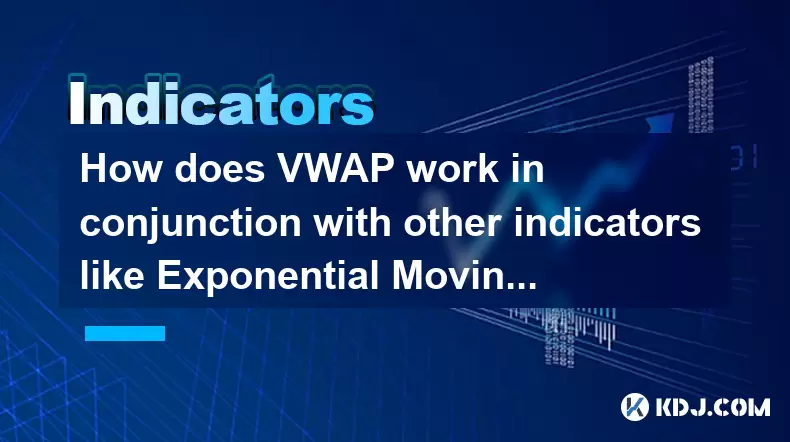
Understanding VWAP and Its Role in Crypto Trading
The Volume Weighted Average Price (VWAP) is a critical analytical tool in cryptocurrency trading, particularly for short-term traders and institutional investors. Unlike simple moving averages, VWAP incorporates both price and volume data, providing a more accurate reflection of an asset’s average price relative to its trading volume over a specific time frame. In crypto markets, where volatility is high and liquidity can vary significantly across exchanges, VWAP helps identify fair value by highlighting where most trading activity has occurred. This makes it especially useful for assessing whether current prices are overvalued or undervalued based on historical volume distribution.
VWAP is calculated by summing the dollar value of all trades (price multiplied by volume) and dividing by the total volume traded over a given period. The formula is:
VWAP = Σ (Price × Volume) / Σ Volume
Because it resets at the start of each trading session, VWAP is inherently intraday-focused, making it most effective on timeframes such as 1-hour or 4-hour charts. Traders use it to detect potential entry and exit points, especially when combined with other technical tools.
Exponential Moving Averages (EMAs) in Cryptocurrency Analysis
Exponential Moving Averages (EMAs) are widely used in crypto trading to smooth price data and highlight trends by assigning greater weight to recent prices. Unlike simple moving averages (SMAs), EMAs react more quickly to price changes, which is crucial in fast-moving digital asset markets. Common EMA periods include the 9-day, 20-day, and 50-day EMAs, each serving different strategic purposes. For instance, shorter EMAs like the 9-period are used for detecting immediate momentum shifts, while longer EMAs help confirm broader market direction.
The EMA calculation involves applying a smoothing factor to the previous EMA value and the current price. The formula is:
EMA = (Priceₜ × k) + (EMAᵧ × (1 - k))
where k = 2 / (N + 1) and N is the number of periods. This responsiveness allows traders to react swiftly to trend reversals or continuations, especially during high-volatility events such as Bitcoin halvings or major exchange outages.
Combining VWAP with EMAs for Enhanced Signal Confirmation
When used together, VWAP and EMAs provide complementary insights that enhance trade decision-making. VWAP acts as a dynamic support/resistance level based on volume, while EMAs offer trend direction. For example, if the current price is above both the VWAP and a rising 20-period EMA, this signals strong bullish momentum supported by volume and trend alignment. Conversely, if price is below VWAP and a declining 50-period EMA, it suggests bearish control.
Traders often look for confluence between these indicators to filter out false signals. A common strategy involves:
- Monitoring whether price is trading above or below VWAP
- Checking if the 9 EMA is above the 20 EMA (bullish) or below (bearish)
- Observing volume spikes near VWAP retests
- Waiting for EMA crossovers near VWAP levels for entry confirmation
This multi-layered approach reduces noise and increases the probability of successful trades, especially in sideways or choppy markets.
Practical Steps to Integrate VWAP and EMA on a Trading Platform
To apply VWAP and EMAs effectively on a crypto trading chart, follow these steps:
- Open your preferred trading platform (e.g., TradingView, Binance, or Bybit)
- Load the price chart for your chosen cryptocurrency (e.g., BTC/USDT)
- Click on the "Indicators" button and search for "VWAP"
- Add VWAP to the chart; it will automatically plot as a single line
- Search for "Exponential Moving Average" in the indicators menu
- Add the first EMA with a period of 9
- Add a second EMA with a period of 20
- Adjust the colors for clarity (e.g., VWAP in blue, 9 EMA in green, 20 EMA in red)
- Enable volume bars at the bottom of the chart to monitor volume spikes
Once configured, observe how price interacts with both VWAP and the EMA ribbon. For instance, a bounce off VWAP with the 9 EMA crossing above the 20 EMA may signal a high-probability long opportunity. Ensure the chart timeframe is set to intraday (e.g., 1H or 4H) for optimal VWAP relevance.
Using VWAP-EMA Convergence for Entry and Exit Points
Traders can use the convergence of VWAP and EMA crossovers to time entries and exits with precision. A typical long setup occurs when:
- Price pulls back to touch or slightly dip below VWAP
- The 9 EMA crosses above the 20 EMA near the VWAP level
- Volume increases on the breakout candle
- RSI or MACD confirms momentum shift
In this scenario, placing a buy order just above the EMA crossover candle with a stop-loss below VWAP can yield favorable risk-reward ratios. For exits, consider taking partial profits when price reaches a resistance zone or when the 9 EMA crosses back below the 20 EMA.
On the short side:
- Price rallies to test VWAP from below
- The 9 EMA crosses under the 20 EMA at the VWAP resistance
- Volume surges on the rejection candle
- Momentum indicators show overbought conditions
A short entry can be initiated with a stop above VWAP. The key is ensuring both volume (via VWAP) and trend (via EMA) align before acting.
Common Misinterpretations and How to Avoid Them
One frequent error is treating VWAP as a standalone trend indicator. VWAP is not a trend-following tool—it reflects average transaction cost, not direction. Relying solely on VWAP without EMA confirmation can lead to counter-trend trades. Another mistake is applying VWAP on daily or weekly charts, where its intraday nature becomes less meaningful. Always use VWAP on timeframes within a single trading session.
Additionally, EMAs can generate false signals during consolidation. To mitigate this, avoid trading EMA crossovers unless they occur near VWAP support or resistance zones. Also, ensure the cryptocurrency pair has sufficient volume; low-volume altcoins may produce erratic VWAP readings.
Frequently Asked Questions
Q: Can VWAP be used on non-intraday timeframes like daily charts?
While technically possible, VWAP is designed for intraday analysis and resets at the start of each session. On daily charts, its value recalculates using only that day’s data, making it less effective for longer-term trend analysis. For daily strategies, EMAs or SMAs are more appropriate.
Q: What EMA periods work best with VWAP in crypto trading?
The 9 and 20-period EMAs are most commonly paired with VWAP due to their responsiveness. The 9 EMA captures short-term momentum, while the 20 EMA acts as a dynamic support/resistance. Some traders also use the 50 EMA to confirm broader trends.
Q: How does exchange volume affect VWAP accuracy in crypto?
VWAP accuracy depends on reliable volume data. On exchanges with low liquidity or potential wash trading, VWAP can be distorted. It’s best used on major exchanges like Binance or Coinbase where volume is genuine and transparent.
Q: Should I use VWAP on all cryptocurrencies equally?
No. VWAP is most effective for high-volume cryptocurrencies like Bitcoin and Ethereum. For low-cap altcoins with sparse trading activity, VWAP may produce misleading signals due to thin order books and erratic volume patterns.
Disclaimer:info@kdj.com
The information provided is not trading advice. kdj.com does not assume any responsibility for any investments made based on the information provided in this article. Cryptocurrencies are highly volatile and it is highly recommended that you invest with caution after thorough research!
If you believe that the content used on this website infringes your copyright, please contact us immediately (info@kdj.com) and we will delete it promptly.
- Ozak AI: Can This Underdog Crypto Achieve a Bull Run to $1?
- 2025-07-31 22:30:12
- Coinbase Breach: Navigating Insider Risk and Bolstering Security
- 2025-07-31 23:11:55
- Bitcoin Rebounds, WeWake Presale Gains Traction: What's the Buzz?
- 2025-07-31 22:30:12
- Bitcoin, Altcoins, and Volume Watchlists: Decoding the Crypto Landscape
- 2025-07-31 23:11:55
- Tron, Fartcoin, and BlockchainFX: What's Trending (and What's Not) in the Crypto World
- 2025-07-31 21:32:19
- Bitcoin, Corporate Investments, and Sustainability: A New Era or Fleeting Fad?
- 2025-07-31 20:50:14
Related knowledge

What is a MACD crossover?
Jul 31,2025 at 11:52pm
Understanding the Role of Private Keys in Cryptocurrency SecurityIn the world of cryptocurrency, private keys are the cornerstone of ownership and con...

How can you use the MACD histogram to determine trend strength?
Jul 31,2025 at 11:10pm
Understanding the MACD Histogram and Its ComponentsThe MACD (Moving Average Convergence Divergence) histogram is a visual representation of the differ...
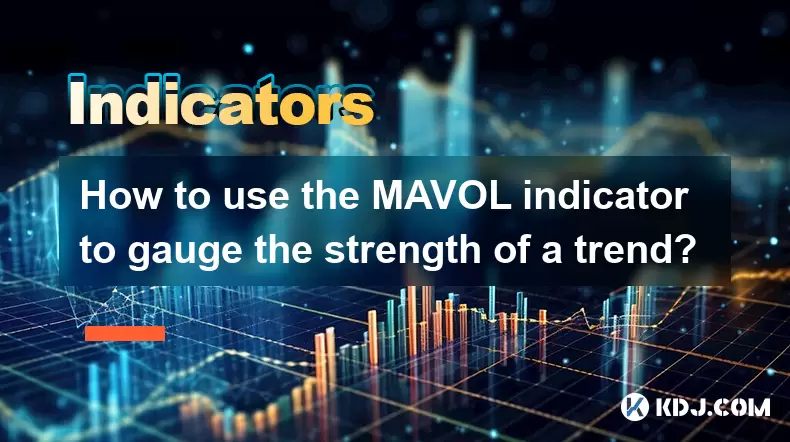
How to use the MAVOL indicator to gauge the strength of a trend?
Jul 31,2025 at 09:57pm
Understanding the MAVOL Indicator in Cryptocurrency TradingThe MAVOL indicator, short for Moving Average of Volume, is a technical analysis tool widel...
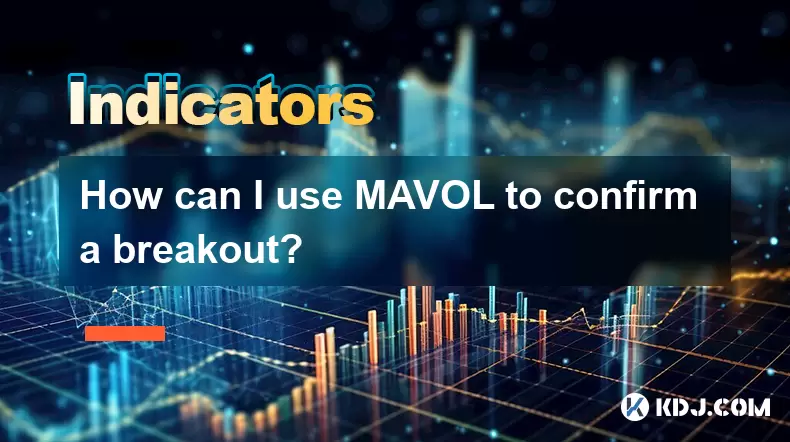
How can I use MAVOL to confirm a breakout?
Jul 31,2025 at 11:38pm
Understanding MAVOL and Its Role in Technical AnalysisMAVOL, short for Moving Average of Volume, is a technical indicator that calculates the average ...
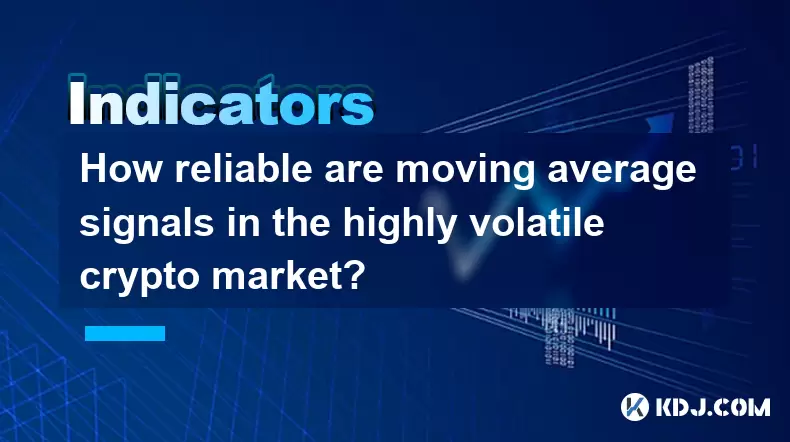
How reliable are moving average signals in the highly volatile crypto market?
Jul 31,2025 at 08:36pm
Understanding Moving Averages in Cryptocurrency TradingMoving averages (MAs) are among the most widely used technical indicators in the cryptocurrency...
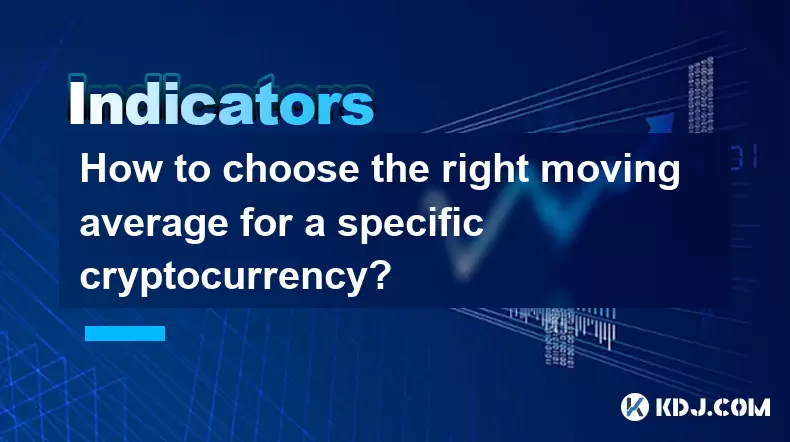
How to choose the right moving average for a specific cryptocurrency?
Jul 31,2025 at 10:29pm
Understanding the Role of Moving Averages in Cryptocurrency TradingMoving averages are foundational tools in technical analysis, widely used by crypto...

What is a MACD crossover?
Jul 31,2025 at 11:52pm
Understanding the Role of Private Keys in Cryptocurrency SecurityIn the world of cryptocurrency, private keys are the cornerstone of ownership and con...

How can you use the MACD histogram to determine trend strength?
Jul 31,2025 at 11:10pm
Understanding the MACD Histogram and Its ComponentsThe MACD (Moving Average Convergence Divergence) histogram is a visual representation of the differ...

How to use the MAVOL indicator to gauge the strength of a trend?
Jul 31,2025 at 09:57pm
Understanding the MAVOL Indicator in Cryptocurrency TradingThe MAVOL indicator, short for Moving Average of Volume, is a technical analysis tool widel...

How can I use MAVOL to confirm a breakout?
Jul 31,2025 at 11:38pm
Understanding MAVOL and Its Role in Technical AnalysisMAVOL, short for Moving Average of Volume, is a technical indicator that calculates the average ...

How reliable are moving average signals in the highly volatile crypto market?
Jul 31,2025 at 08:36pm
Understanding Moving Averages in Cryptocurrency TradingMoving averages (MAs) are among the most widely used technical indicators in the cryptocurrency...

How to choose the right moving average for a specific cryptocurrency?
Jul 31,2025 at 10:29pm
Understanding the Role of Moving Averages in Cryptocurrency TradingMoving averages are foundational tools in technical analysis, widely used by crypto...
See all articles

























































































